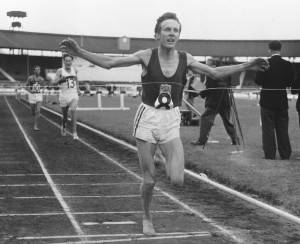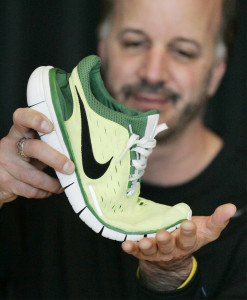WASHINGTON — The first sunny days of spring are often the busiest in Washington — at least on the sidewalks.
Runners, forced into hibernation all winter long, break out of the gym and take their strides to the streets. Take a closer look at those runners, though, and you may notice something odd: Some of them aren’t wearing shoes.
Barefoot running is not new — in fact, Ethiopia’s Olympic marathoner Abebe Bikila won a gold medal sans shoes in 1960, and English runner Bruce Tulloh set record times with nothing on his feet. But it wasn’t until Christopher McDougall published “Born to Run” in 2009 that barefoot running became more popular among the masses, Runner’s World reports.

In the book, McDougall explores the possibility that cushioned running shoes may actually contribute to running-related injuries, rather than prevent them. Major shoe companies quickly responded to the interest in barefoot running with “minimalist” running shoes, which offer a barefoot running experience for those who still want some protection on their feet.
But how healthy is it to run with little or no shoes? Local fitness expert Josef Brandenburg, owner of The Body You Want, discusses the risks and benefits of running barefoot, and offers tips on the best way to incorporate barefoot running into your fitness routine.
The benefits — and risks — of barefoot running
One of the best things about barefoot running, Brandenburg says, is that it makes running a self-limiting exercise. This means your body is able to let you know if something is wrong much earlier than if you were in cushioned shoes.
Brandenburg explains that traditional, cushioned shoes can mask fatigue and running-related pains.
“That stress and that trauma accumulate over time, and there’s a lot of thinking that this leads to a lot of the overuse injuries that a lot of runners have,” he says.
Running barefoot, or in minimalist shoes, can also help strengthen the intrinsic muscles in the foot, as well as the muscles in the calves. According to Runner’s World, studies have shown that running barefoot can also decrease race time.
Of course, barefoot running is not for everyone. It could lead to more injuries for those who have structural problems with their feet or who have had previous injuries.
“There are just a lot of really important muscles there that are responsible for keeping the arch of your foot and controlling it, and when those muscles can’t do their job very well, you end up with a lot of problems with the big toe and the Achilles and plantar fasciitis and the claves. Pretty much it works its way all the way up the chain,” Brandenburg says.
And true barefoot running can put a runner at risk for puncture wounds, scrapes and infections.
So you want to try it?

If barefoot running piques your interest, Brandenburg says the best way to get started is to ease into it. He suggests doing some weight-bearing activities and taking some short walks barefoot, or in minimalist shoes. These activities will help to strengthen the core muscles in your feet.
He also suggests a stretching exercise where you arch your foot while keeping the ball of your foot and your big toe on the ground. Start this exercise sitting, and then work up to doing the stretch in a standing position.
“That [exercise] will do a whole lot to help improve how your body absorbs force, which will go a long way to being faster and then also getting injured less often,” Brandenburg says.
When it’s time for that first run, don’t plan on going for a long one. The first run without shoes, or in minimalist shoes, should be a quarter of a mile or less. And Brandenburg says to pay special attention to how you feel the next day. Likely, you’ll be sore since you worked new muscles.
“It’s OK if you’re sore, as long as it’s not painful,” he says. “You want to keep it really, really short in the beginning. Your shoes have been doing a lot of the work, so the little intrinsic muscles in your feet aren’t really fit enough to do all that work, and also the bones themselves need time to get stronger.”
After a few days of rest, try and do two or three more runs that week of the same distance. Brandenburg says barefoot running is best when it’s incorporated into a regular fitness routine, not when it’s the primary form of exercise. And he recommends finding some softer dirt trails, free of roots, over the hard pavement for your first few runs.
“Concrete’s not really a natural surface for the human body,” he says.
Of course, you can always test out barefoot running on a treadmill, but just know that you won’t get the same workout. Brandenburg says the treadmill does a lot of the work for you.
“As soon as your foot hits the belt, the belt pulls your foot backward, so it does the push for you.”







